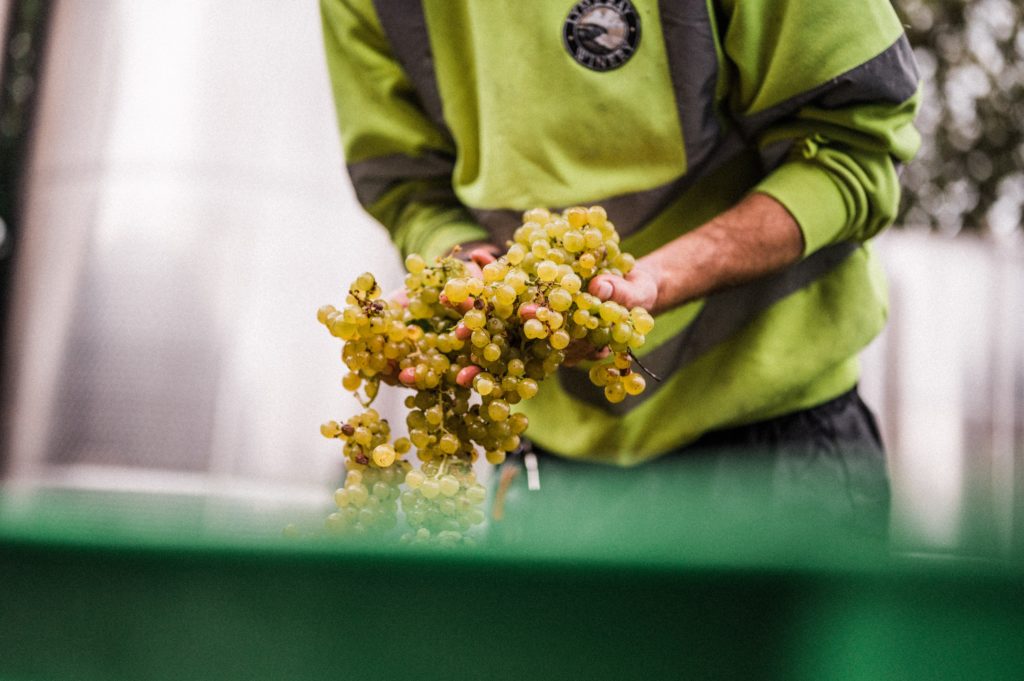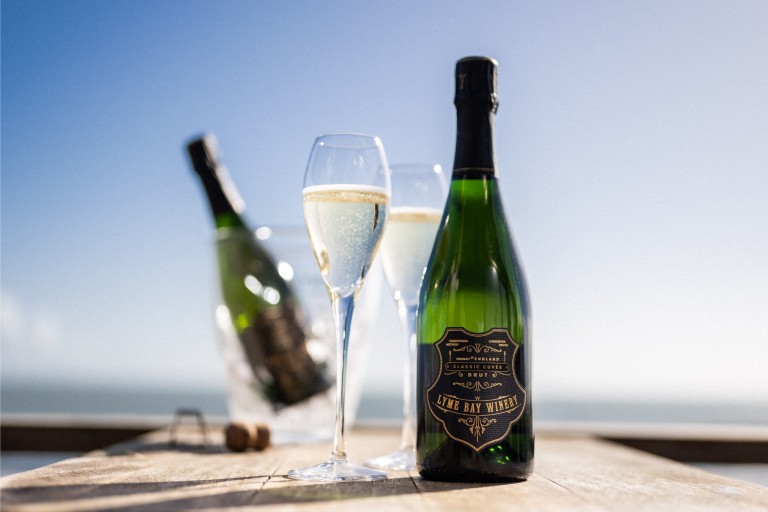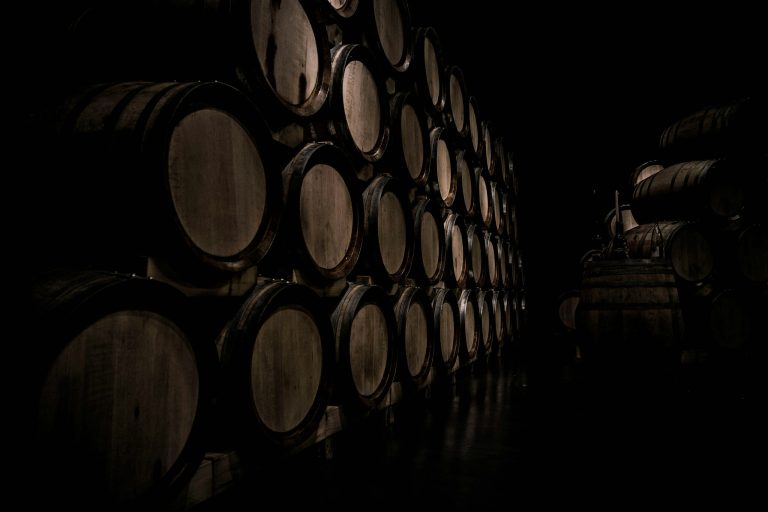For centuries the English were more focused on drinking wine than producing it. In 2020, the UK ranked 5th in the world for overall wine consumption, but in terms of wine production, it won’t even make it into the top 20. Things are starting to change though.
Due to its cold climate, wine production in England was far from ideal. Nevertheless, due to the increase in temperature in the last decade, that has changed dramatically. Vineyards are becoming a common sight in counties such as Essex, Sussex, and Kent, where more varieties of wine can be produced due to the drier and warmer climate. Also, the area’s limestone soil is ideal for growing the grapes used to make sparkling wine.
In recent years, by combining growing expertise with ideal geography, English winemakers managed to exceed expectations and create high-quality, sought-after wines. England has become an exciting new force in the wine world, producing world-class sparkling wines, exciting dry whites, winning awards, and earning well-deserved recognition across the globe.
France, watch out. English wine is on the rise!
But what is the story behind the recent success of English wine? In this article, we follow the journey of English wine through the centuries, from the introduction to Britain of the vine in 43BC by the Romans to the opening of the first commercial English vineyard in 1955.
Roman Times
Whether vine growing and winemaking existed in pre-Roman Britain is up for debate as there are no reliable records or archaeological findings to support that claim. We also know that the native Celts seem to have preferred beer and mead, whose production used local ingredients.
We know for sure that the Romans introduced the vine and possibly winemaking to Britain as early as 43 BC when emperor Claudius began the conquest of the British Isles. Romans loved their wine, and wine drinking was a commonplace activity in Roman villas, houses, and garrisons at the time. And although the Romans tried to grow grapes in England, strong trading links with France and Italy allowed wine to be imported relatively easily.
Vikings and Normans
Invasions by the Jutes, the Angles, and the Saxons followed the Romans’ 300 years of occupation, and during these troubled times, vineyards were neglected. In the sixth century, the spread of Christianity to the south and east of the county led to the rebirth of vine growing, and there is some evidence that vineyards were established. However, wine trade with mainland Europe also increased, which limited the vine production in Britain.
In 793 AD, the Vikings began their invasion of the British Isles. Starting with the coastal monastery of Lindisfarne on the northeast coast of England, the Norsemen from Scandinavia raided a series of Christian monasteries, which once again put a halt to vine growing and winemaking skills’ development.
King Alfred, who defeated the armies of the Norse monarch of East Anglia, Guthrum, at the Battle of Edington in May 878 AD, helped re-establish Christianity, which encouraged the revival of viticulture. Vineyards were once again attached to monasteries, particularly in the West Country and south-central regions.
During the Norman Invasion in the 11th century, led by William the Conqueror, a concise record of life in the Middle Ages was recorded in the Domesday Book. It records 42 vineyards in England, twelve of which were attached to monasteries.
With William the Conqueror came French abbots and their monks who were experienced in winegrowing, along with nobles and soldiers for whom wine was a daily requirement. Besides the vineyards attached to monasteries, most of the rest belonged to nobles and were cultivated to provide them with the necessary wine for their dining tables and altars.
Several sources point out that the weather had warmed up in Britain for 300 years from the beginning of the Norman Invasion, which possibly aided the growth and ripening of grapes. Unfortunately, the weather turned cool and wet again at the end of this period, resulting in a decline in viticulture at the beginning of the Middle Ages.
The Middle Ages
The arrival of the Black Death (the bubonic plague pandemic occurring in Afro-Eurasia from 1346 to 1353) cost the lives of millions of people and, as a result, depleted farmhands. Many vineyards’ owners decided to lease their land rather than working it themselves. To feed their families, the new tenants focused on short-term cash crops rather than growing vines.
Henry II’s (1154–1189) ascension to the throne promoted commercial links between France and England. Transport conditions and speeds had vastly improved by that point, and the importation of products (with wine among them) became cheaper. That combined with the fact that France made wine which better suited British tastes (especially the ones of English nobles), wine exports from Bordeaux were plentiful at the time.
As they do today, English wines faced considerable competition from imported wines. As a result, vineyard owners found more profitable uses for their land unless they could support their winemaking efforts out of funds from other sources. Consequently, from the mid-1300s onwards, Britain became renowned for its expertise in selecting, importing, bottling and cellaring wine rather than producing it.
Eighteenth & Nineteenth Century
In the late 18th and early 19th centuries, some noblemen and botanists experimented with wine production. Among them was Hon Charles Hamilton in his estate at Painshill Place, Cobham, Surrey and the great botanist John Tradescant in Lord Salisbury’s estate in Hertfordshire. Unfortunately, despite the enthusiasm of their owners, the uncertainty of the climate took its toll, and many vineyards were eventually abandoned.
In 1860, under Lord Palmerston, the government supported free trade and reduced the tax on imported wines by 83%. English wine was therefore outcompeted by superior wines from France, Spain, Italy, and Germany that could be sold at a lower cost to English customers.
Tastes and fashions in wine also changed. Sweet, heavy, fortified wines from Australia and South Africa were popular at that time among upper and upper-middle-class people
and English wines could never match these taste profiles.
20th century
The English winemaking tradition was brought to an abrupt end with the onset of the First World War, as the need for crops took priority over wine production. It was not until after the war that the rediscovery of English wines and winemaking began.
A combination of new grape varieties, the acceptance by the public of the style of wines that those varieties produced, better growing techniques and disease control, and the work of several English wine pioneers were the key elements in that revival.
George Ordish
One of these pioneers was George Ordish (1906-1992), an entomologist and economist by training. On returning to his native Kent after working as an entomologist in the Champagne region in France, he was struck by the similarities in climate and landscape between his home county and the Champagne region.
After doing his research, Ordish decided to investigate whether good-quality wines can be made from English grown grapes by planting vines in his garden near Maidstone. He soon realised that grapes would ripen in the local climate, and these first trials inspired his first book on the subject, ‘Wine Growing in England’, which was published in 1953.
Ray Barrington Brock
Ray Barrington Brock (1907-1999) is considered by many as the founding father of the English winemaking revival. In 1946, Brock established a research station at Oxted in Surrey (the Oxted Viticultural Research Station). By obtaining grapevines and vine cuttings from universities and viticultural research stations in the major wine-growing countries of Europe, Russia, and the US, he trialled more than 600 different table and wine grape varieties.
Through his research, he introduced to the UK a collection of grape varieties, including Müller-Thurgau and Seyval blanc, among others, that became the backbone of the early English wine industry.
You can read more about wine grape varieties in our comprehensive guide.
The first commercial English vineyards
In 1952, Major-General Sir Guy Salisbury-Jones (1896-1985) planted the first commercial vineyard in England at Hambledon, Hampshire growing Seyval Blanc. Hambledon vineyard was the first vineyard to be explicitly planted to produce wine for sale since Castle Coch in 1875.
The second commercial vineyard was planted in 1955 by Jack Ward, who owned a wine company in East Sussex. He introduced new varieties to the UK, such as Reichensteiner, Huxelrebe, and Schönburger, and was the first chairman of the English Vineyards Association (now UK Vineyards Association).
After that, with equipment and methods becoming cheaper and more available to the public, many people started to produce their own wines from home. At the beginning of the 1960s, the government outlawed the production of homemade alcohol, only to retract the law five years later as the homebrew trend had escalated extensively.
During the late 1960s, more vineyards were planted, and new grape varieties were introduced. Technology also helped improve knowledge and create a better understanding of owning and running vineyards.
Modern Day Wine Making
English viticulture has undergone considerable change, partly influenced by the effects of climate change, particularly in the south. This slight temperature increase has brought England’s climate closer to that of the Champagne regions of Northern France and has allowed English vineyards to grow the true ‘Champagne’ varieties: Chardonnay, Pinot Noir, and Pinot Meunier.
As time has passed, the establishment of more UK vineyards has led to a considerable increase in experience and, therefore, more comprehensive knowledge, leading to better yields and, more importantly, better quality of yield. English sparkling wines are now hitting the top awards in many blind-taste tests across the world.
At Lyme Bay, we produce award-winning English wines. Our wines have gained prestige and unrivalled respect in the global wine community and have been recognised in competitions such as the International Wine and Spirit Competition, the Decanter World Wine Awards, and many more.

For two years running, Lyme Bay’s Sparkling Rosé Wine has been the People’s Choice Wine Award winner. Our main passion now is in the production of superior English still wines. Our Chardonnay became only the second English still wine ever to win an International Wine Challenge Gold award.
Established for over 25 years, we continually strive to produce the best, most delicious English wines to suit every palate and grace any table. You can read more about our ethos and plans here. We are already making history, but the best is yet to come.
If you want to get a taste, take a look at our English still and sparkling wines.



